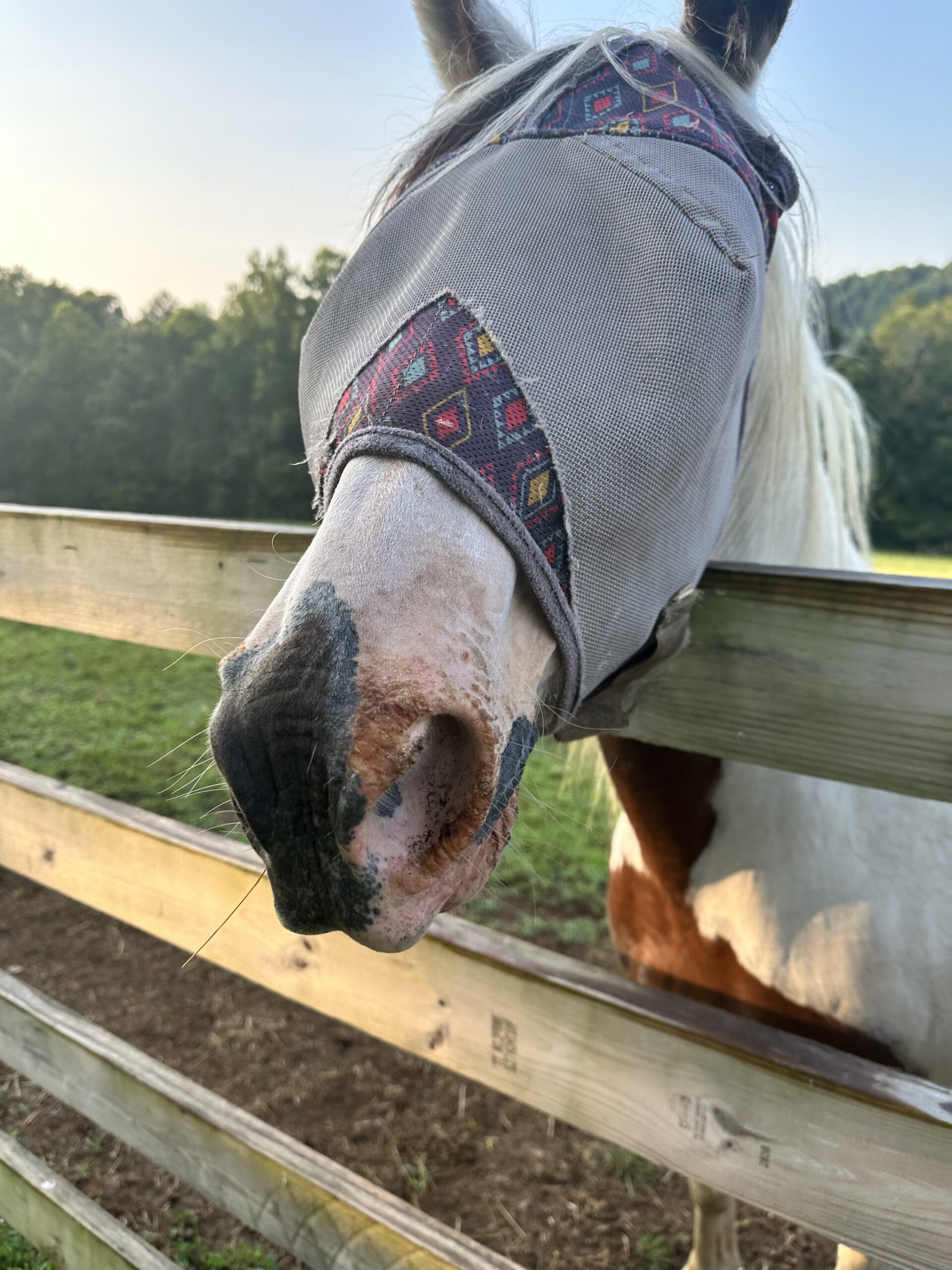When it’s Too Hot To Trot: It’s JULY and summer has heated up. It’s sooo hot—the sun is beating down and, just like us, our equine babies are not exempt from its effects. Our experience serves as a reminder to horse owners that sometimes, even with our best intentions, we miss something. Sigh.
Amelia is a rescue horse. She is a lovely white and brown Medicine Hat Paint that has the sweetest personality. She is adored and pampered. She has pink skin around one of her eyes and we are religious about keeping a fly/sun mask on her to protect it. Despite our efforts to shield her from the sun, her sweet little nose has suffered from sunburn. So, let’s cover this topic while we are living it. What are the reasons horses can get sunburned, the importance of sun protection, and the measures we’ve taken to ensure Amelia’s well-being.
Why Can Horses Get Sunburned?
While it might not be obvious at first, horses are indeed susceptible to sunburn, especially in certain areas with less hair coverage and lighter pigmentation. Just like humans, they can suffer from the harmful effects of the sun’s UV rays. In Amelia’s case, her sweet little pink-rimmed eye received protection with a fly mask, but unfortunately, her delicate nose poked out too far and we just had never had a problem with it before so it was overlooked. This is what sunburn looks like on a horse…
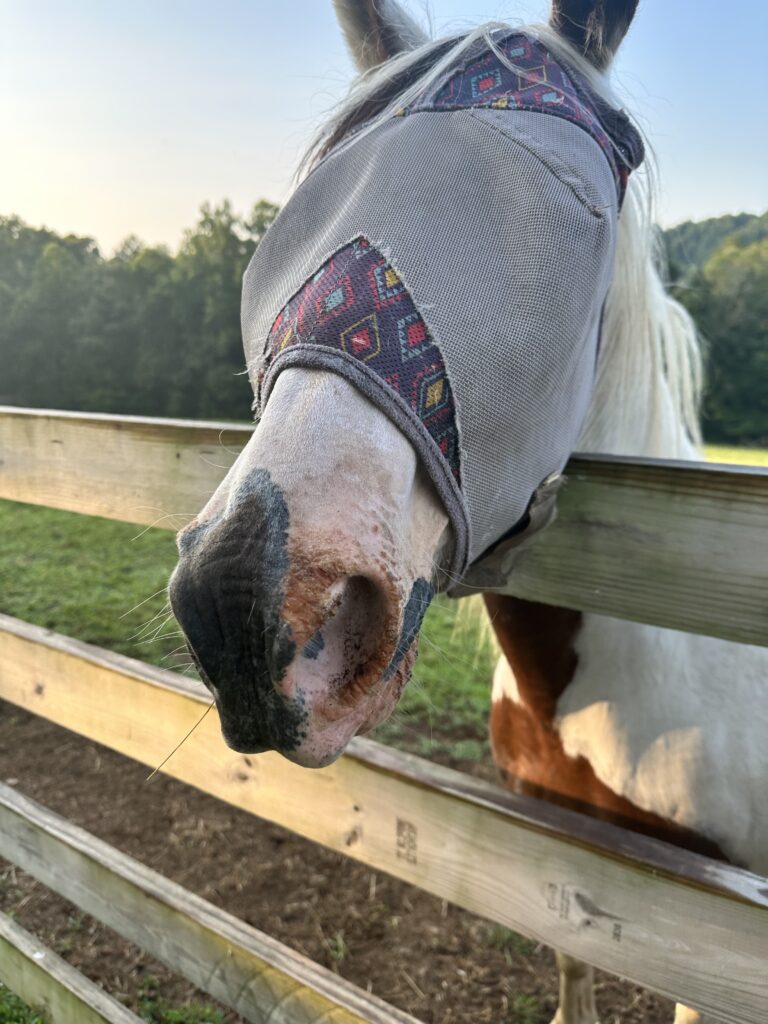
The Vulnerability of the Nose
Horses with pink or lighter-colored noses are particularly at risk for sunburn due to their reduced melanin levels. Melanin is the pigment responsible for absorbing UV rays and protecting the skin from damage. In areas with less melanin, such as Amelia’s nose, the risk of sunburn increases significantly.
The Importance of Sun Protection
Sunburn not only causes discomfort and pain to our equine friends but can also lead to more serious issues, like skin cancer. Besides the physical discomfort, sunburn can also lead to excessive peeling, irritation, and prolonged healing time.
Amelia’s Action Plan
After discovering Amelia’s sunburned nose, we reached out to our vet to confirm and immediately took action to address the issue and prevent further damage. Here’s what we’ve done:
1. Covered Nose Mask: We found a specially designed covered nose mask that provides ample protection for her sensitive nose, shielding it from harmful UV rays.
Here is the one we are using. We already used the regular Crusader Mask and we love them because they hold up so well, but this one has the nose piece. She doesn’t seem to mind it at all.
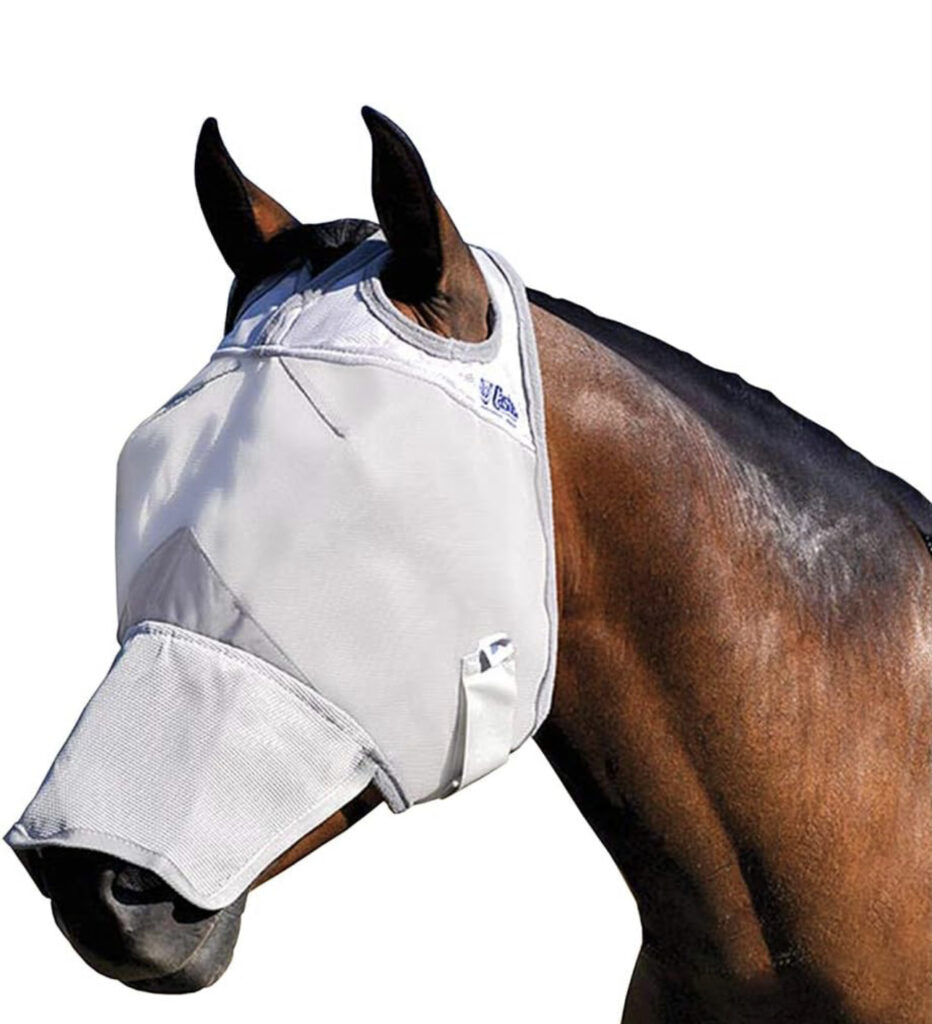
2. Desitin Treatment: To aid in the healing process and protect her nose from further sun exposure, we applied a generous amount of Desitin, which contains 40% zinc oxide. Zinc oxide acts as a physical barrier that reflects and absorbs UV rays, providing a protective layer on the skin.
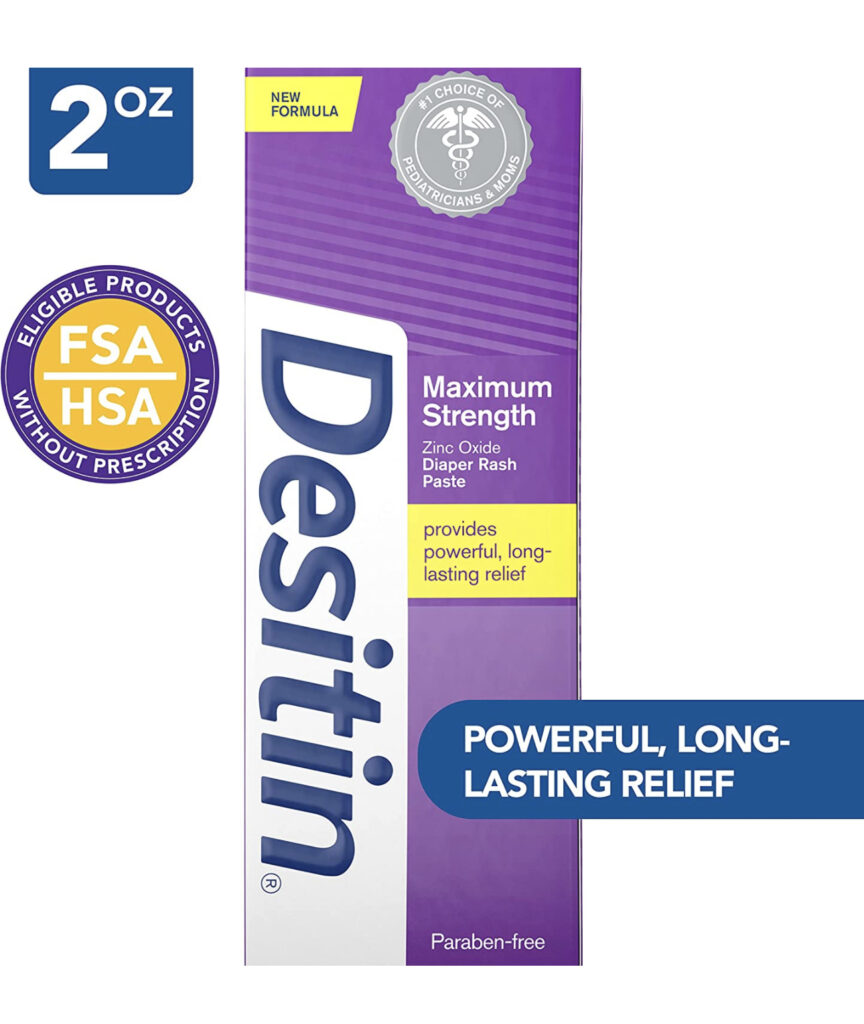
3. Keep the flies away! We use SWAT Fly ointment to keep the nasty flies away from her crusty little nose. This is a must in our tool kit to keep flies away from any wound or sore as well as other sensitive areas. It’s great because you can be really targeted about where it goes.
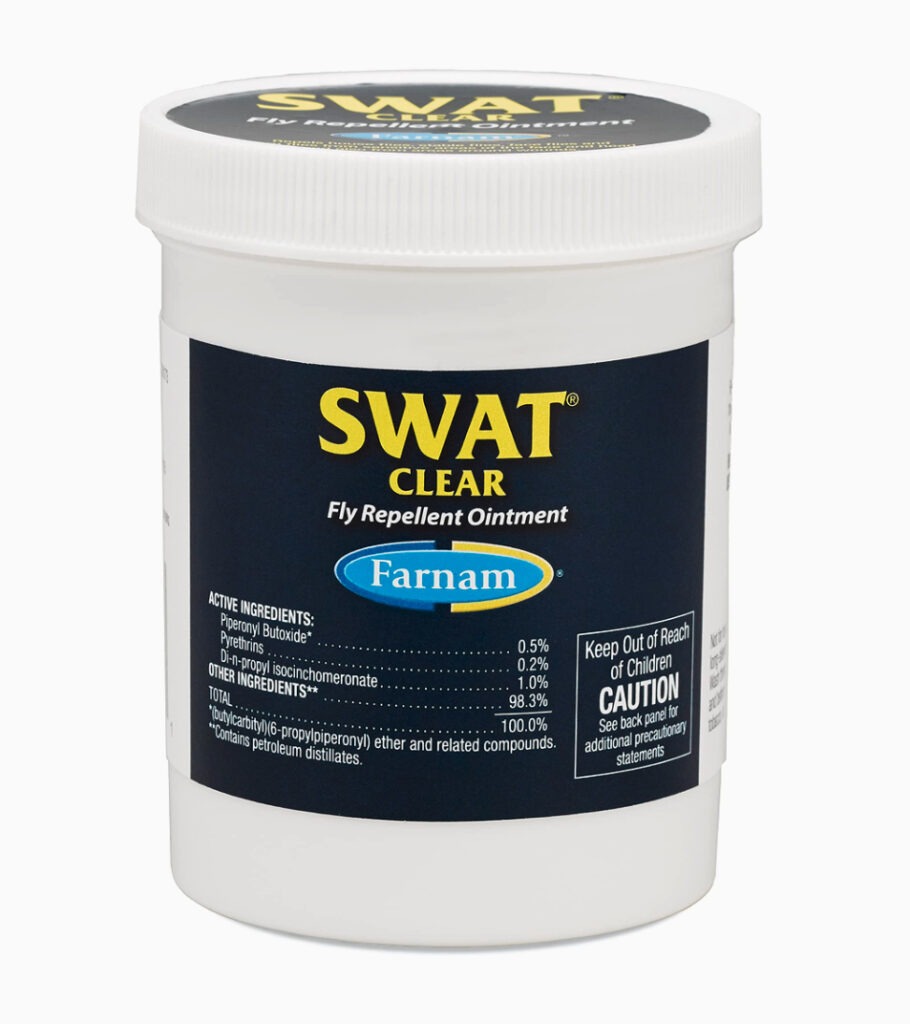
4. Limiting Sun Exposure: Whenever possible, we will adjust Amelia’s turnout schedule to minimize her exposure to direct sunlight during peak hours when the sun’s rays are most intense.
Our experience with Amelia’s sunburned nose served as an important reminder of the vulnerability of our equine babies to sunburn and the significance of taking preventive measures. Amelia’s health and happiness will always be our top priority, and we’ll continue to learn and adapt to provide her with the best care possible.🌞🐴
#rescuehorse #FarmingAfter50 #HorseLovers #EquestrianLife #HorseTips #HorseCare #HorseHealth #HorseLife #HorseOwners #EquineWellness #EquineAdvice #HorseSunburn #HorseProducts #HorseProtection #HorseSunscreen #HorseTreatments #HorseAffiliateLinks

